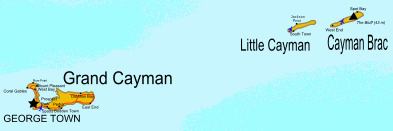Abbreviation RCIPS Employees 407 | Formed 1907 Size 102 square miles | |
 | ||
Legal personality Governmental: Government agency Operations jurisdiction* Police area of Cayman Islands, CAY | ||
The Royal Cayman Islands Police Service is the standing police force of the British overseas territory of the Cayman Islands. The police force was formed in 1907 and currently (2009) stands at 343 enlisted officers, with 64 civilians.
Contents
- Structure and ranks
- Police Districts
- Specialist departments
- Air Operations Unit
- Joint Marine Unit
- Uniform Support Group
- References
The Royal Cayman Islands Police Service serves all three of the Cayman Islands, namely, Grand Cayman, Cayman Brac and Little Cayman. Demographically, in 2010, the estimated population of the Cayman Islands was about 56,732, representing a mix of more than 100 nationalities. The vast majority of people reside on Grand Cayman with Cayman Brac being the second most populated with about 2,000 residents, followed by Little Cayman with around 200 permanent residents.
Against this backdrop the RCIPS deals with more than 22,000 calls for assistance every year, as well as proactively patrolling the streets 24-hours a day, seven days a week. It has a history of actively recruiting police officers from other nations with at least five years' experience.
Structure and ranks
The RCIPS is headed by a Commissioner, assisted by up to two Deputy Commissioners. Other executive officers hold the ranks of Chief Superintendent and Superintendent. Each of the four policing Districts is headed by a Chief Inspector, assisted by an Inspector (except in the smallest District, which covers the two smaller islands). Inspectors are responsible for neighbourhood teams consisting of Sergeants and Constables. In addition to neighbourhood policing, officers are assigned to the Criminal Investigation Department (CID) with ranks (up to Chief Superintendent) prefixed with the word 'Detective'. There are also a number of specialist units.
The RCIPS engages Special Constables, who are unpaid volunteer police officers, to support the work of full-time officers. There are powers to appoint Auxiliary Constables to specialist roles. Special Constables may advance to the rank of Special Sergeant, and also have their own Commandant, with a Deputy and an Assistant.
Police Districts
For purposes of criminal investigation, neighbourhood policing, and crime prevention, the RCIPS is divided into four Districts:
Specialist departments
The RCIPS has a number of specialist departments, beyond the CID and the neighbourhood policing teams. Of these, the most visible and sizeable are the following.
Air Operations Unit
Staffed by professional pilots and engineers, as well as police officers, the Air Operations Unit provides aerial support through the operation of a Eurocopter EC135 police helicopter.
Joint Marine Unit
Policing at sea is a significant part of law enforcement for an island nation. The JMU is a combined force of police officers and Cayman Islands Customs Department officers operating a fleet of fast motor boats to provide law enforcement, customs control, immigration control, and search and rescue operations.
Uniform Support Group
The USG is a paramilitary force within the RCIPS, whose officers are trained to high standards of fitness, and to an advanced level of firearms training. The USG provides operational support as required, and is also the frontline of defence against organised violent crime and terrorism threats.
